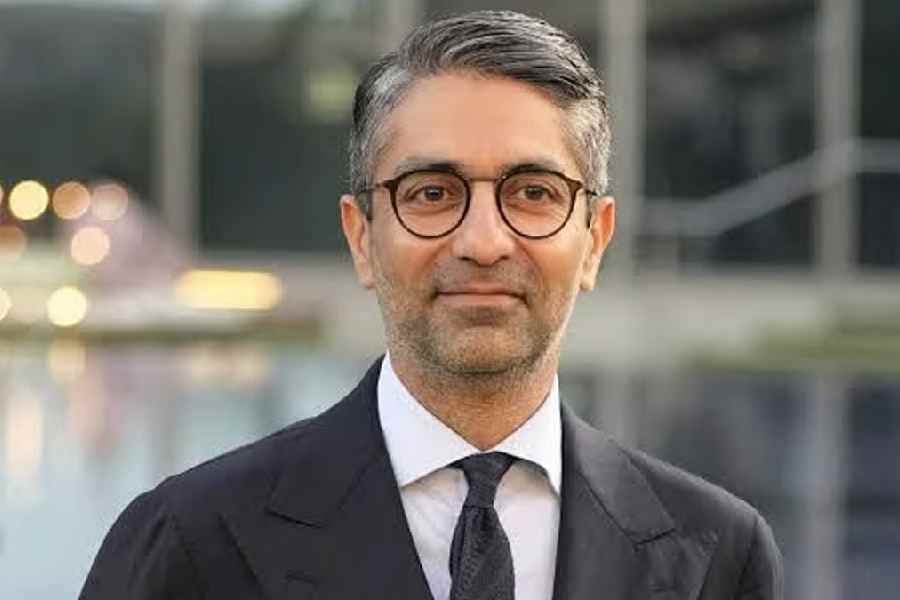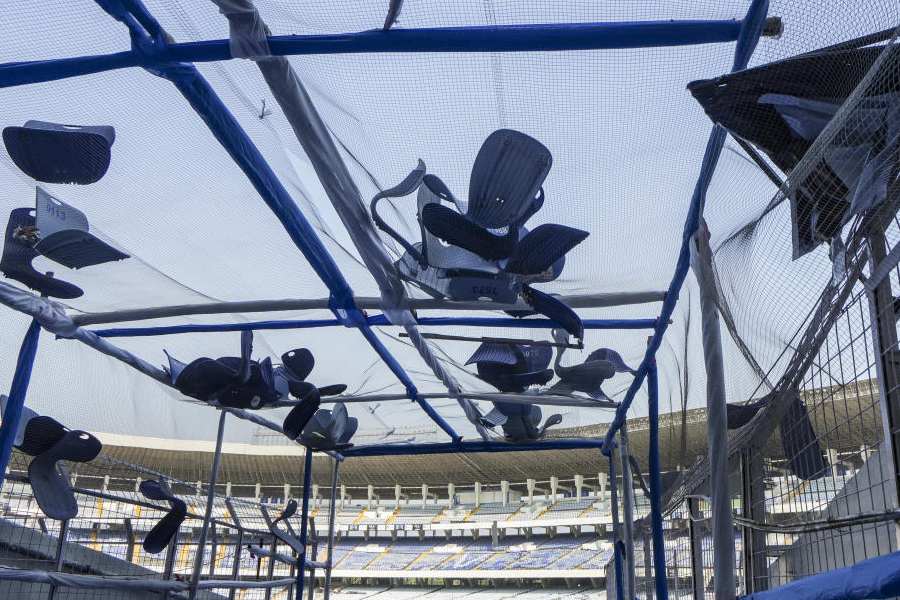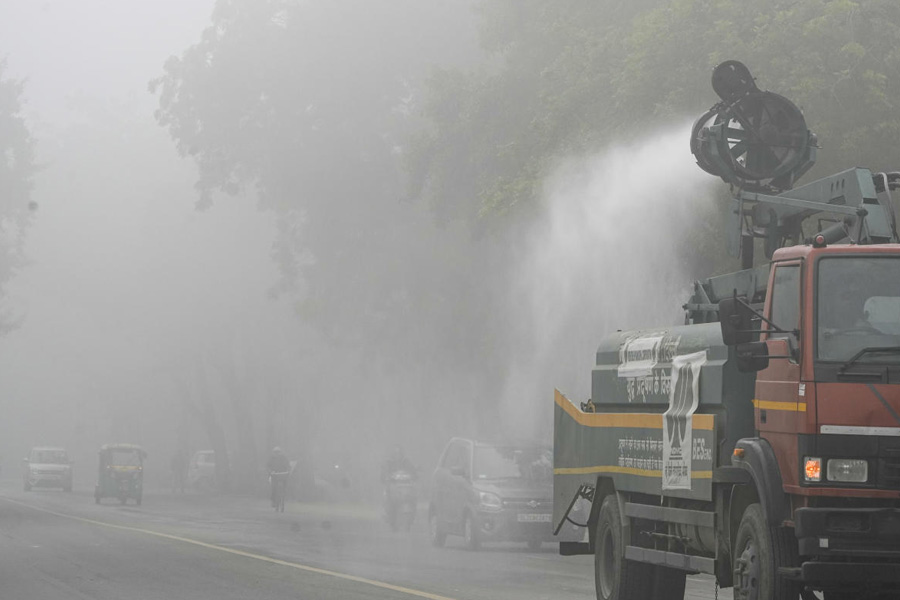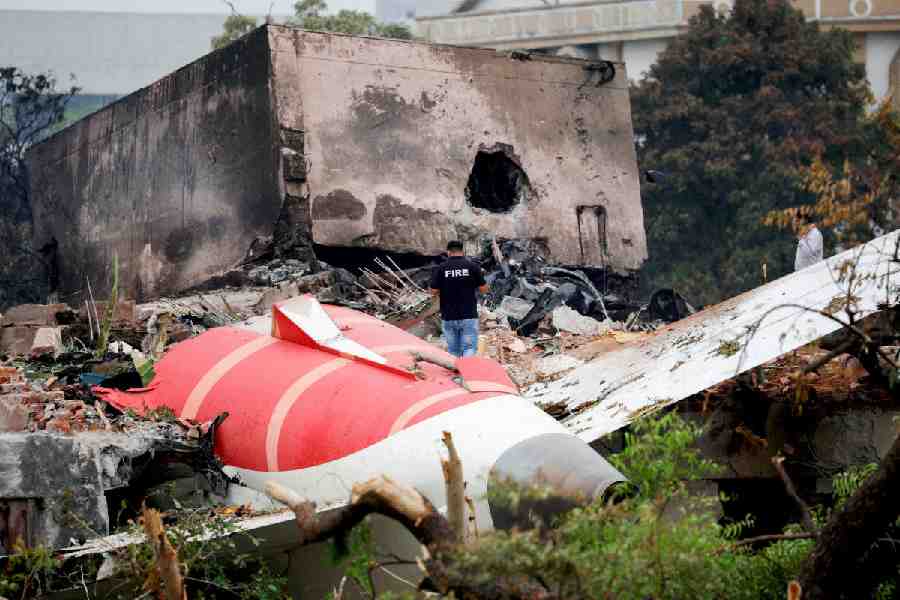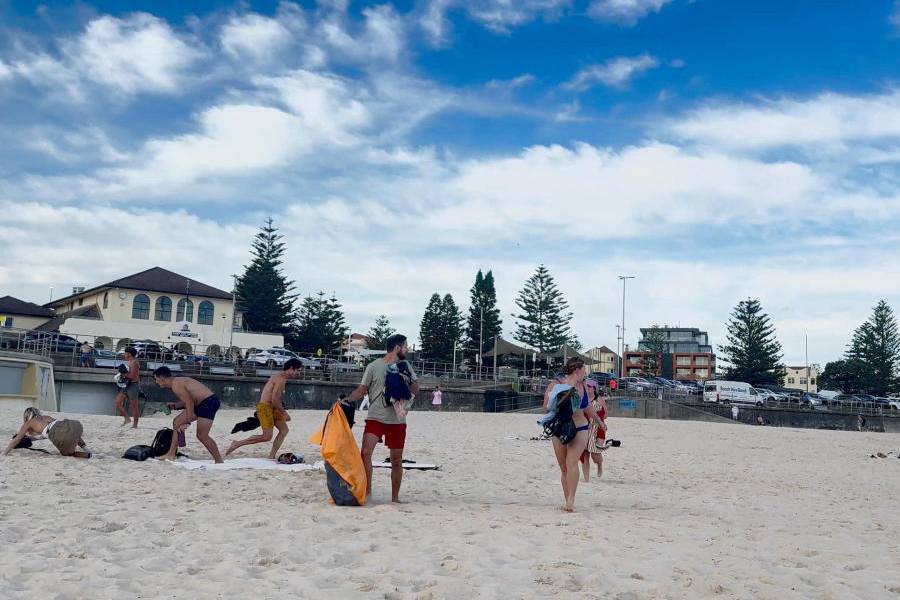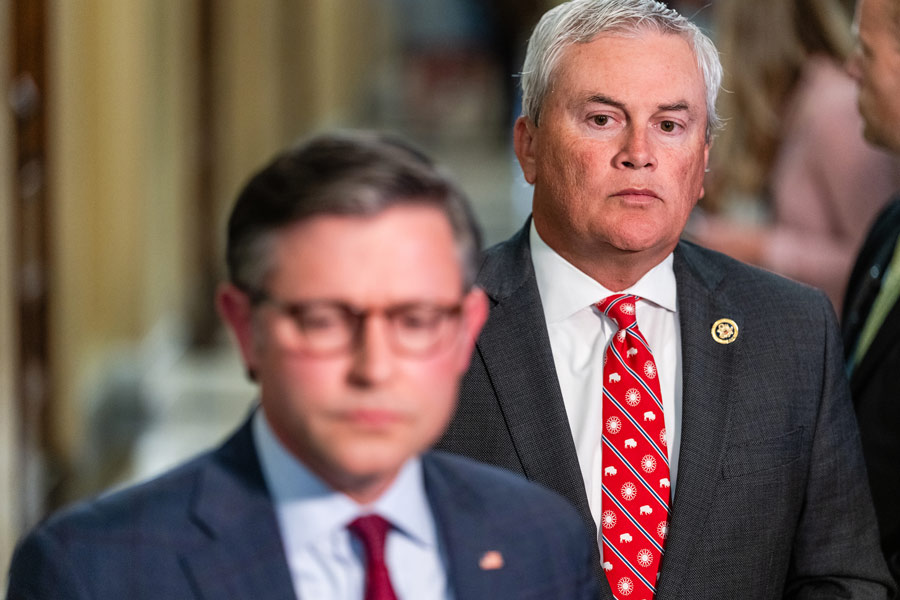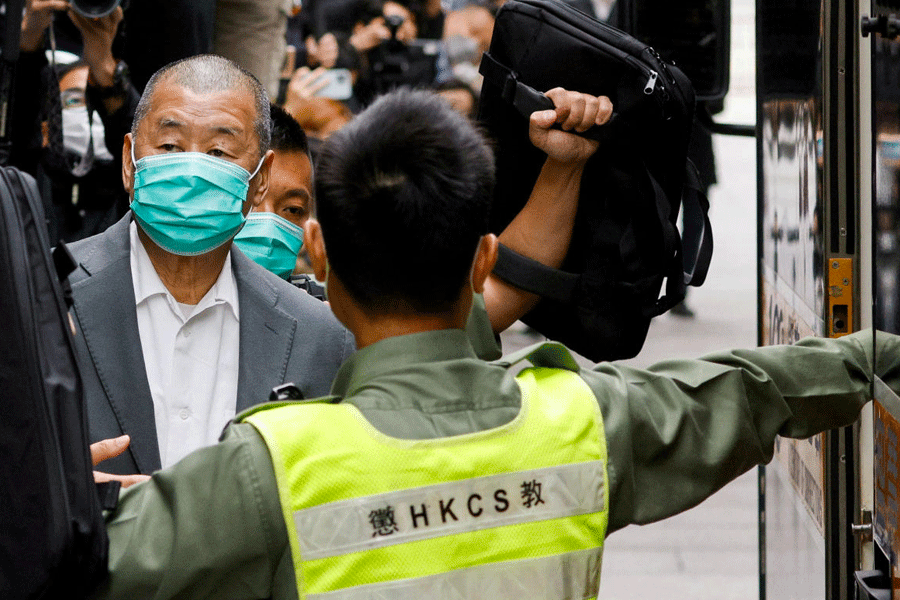 |
| (Above) Customers sip tea beside a grave at Lucky Restaurant; (below) the painting M.F. Husain gifted the eatery |
 |
From the outside, the joint in Ahmedabad’s old city looks hardly the sort of upscale eatery where you would want to have a candle-lit meal.
But the candles and lamps at Lucky Restaurant keep burning right through the morning.
Take a close look and you’ll see it’s not the tables the flames are placed on. They are flickering on graves of the dead flanking the tables —right inside the restaurant — the final resting place of a Sufi family from five centuries ago.
Welcome to Ahmedabad’s “graveyard eatery”, creepy to the squeamish but charming enough for its band of loyal patrons to be coming every day, and haunting enough to inspire the country’s best-known painter.
Breakfast or dinner, whether it’s by the light of the diyas or after they’ve blown out, is perennially romantic at Lucky Restaurant.
At least, it would be if the hubbub would die down for a moment. From five in the morning till it closes at midnight, the joint remains one of the city’s busiest, with most customers affording barely a glance at the 24 graves separating the tables.
Well-off or working class, old or young, they throng the eatery to relish its specialities: tea, south Indian food and the famous maska bun, with a spread of jam over the butter.
Gulambhai, 45, one of the junior partners who runs the eatery, says the average daily turnover is Rs 50,000.
Jitendra Patel, 40, has been coming almost every day here for the last 15 years — from the time Lucky was a small tea shop before the restaurant came up in the late 1990s. The government contractor loves the tea whose standard, he says, has never slipped.
The rates are affordable: Rs 6 for a cup of tea and Rs 9 for the maska bun. What Patel likes best is the joint’s location — in the heart of the city, with the furthest government office hardly a 20-minute drive.
Don’t the graves make him uneasy?
“Actually, I get a feeling that the place is blessed. I do my business meetings and deals here. Gulambhai doesn’t mind even if I keep sitting here for over two hours,” Patel says.
But don’t Muslims feel offended that a cemetery has been turned into a restaurant? Gulambhai takes care that they don’t.
All the graves are maintained impeccably, and railings have been built around them so that no one touches them. Every morning, Gulambhai cleans the graves, lays fresh flowers and lights the diyas — or candles if it’s a religious occasion.
The 16th-century cemetery itself was left unmolested when the walls came around it, leaving only one of the 25 graves outside. The concrete floors were built around the graves, leaving intact the original earth under which the dead lie buried. The tin roof makes room for a tree trunk to jut out towards the sky.
“There is nothing irreligious or objectionable about the restaurant,” says Ashif Kadiwala, a religious preacher and regular visitor. “The owners maintain the graves well; they seem genuinely respectful.”
But Ahmedsahab Alvi, the high priest of the Sajjadnashi of Hazarat Shah Vajihiuddin Alavi Dargah, disagrees: “The very idea of a restaurant in a graveyard is objectionable.”
Although he has never raised any objections, he says, “Islam does not permit it. The graveyard is a sacred place where you are supposed to read the holy Quran and observe solemnity. But here people walk in wearing shoes. It’s disgusting.”
The 25 graves, according to 80-year-old Urdu writer Varis Alvi, are from the period of Sufi saint Shah Vajihiuddin (1504-1589), whom he claims as an ancestor.
Alvi believes the graves are those of Hazrat Sayyed Kabiruddin — a Sufi saint believed to be a distant relative of Vajihiuddin — and his family.
The cemetery, bang opposite the famous Siddi Sayed Mosque in Mirzapur locality, close to where the Sabarmati flows, was once owned by a private trust run by Varis Alvi’s cousin Sayyed Mohmed.
In the early ’50s, Mohmed, struggling to make ends meet, leased a small part of the land adjoining Kabiruddin’s tomb to a Malayalee from Kozhikode, K. Mohammed, to start a small tea shop. Mohammed named it “Lucky”. It lived up to the name.
“It started as a very small kiosk selling paan and tea but it kept growing,” Alvi said. Finally, Mohmed sold the entire land — the graveyard had been unused for centuries — to Mohammed.
“Before he died a few years ago, Mohammed entered into a partnership with a Mumbai-based businessman from Gujarat,” Alvi said. Masulumbhai, from the Chelia community of Gujarati Muslims, is the senior partner in the eatery.
“Initially, people were cagey about eating at a joint with graves in between the tables. But once they got over that, they become regulars,” says Gulambhai.
“I have been coming since I was a student,” says Yashin Sheikh, a 35-year-old transporter. “The tea here has a unique flavour.”
Unique enough to draw Maqbool Fida Husain whenever he is in Ahmedabad. The artist has been visiting Lucky for over five decades, since the time it was a tea stall.
Four years ago, he gifted the restaurant an untitled work of his, which now takes pride of place on the wall.
A local art gallery had offered Gulambhai Rs 55 lakh for the painting, but he said a firm “no”.
“Gifts are not meant to be sold or auctioned, no matter how much money they might fetch,” he says.
Whether they are from the 16th century or the 21st, Gulambhai knows that some things are eternal.


